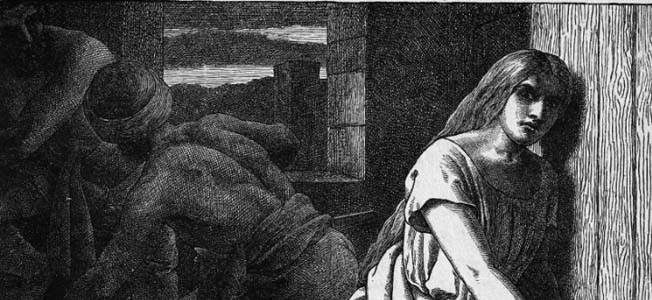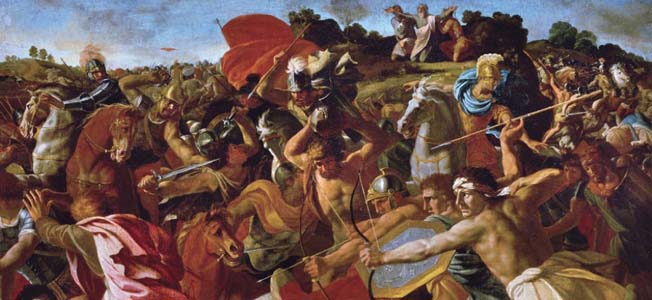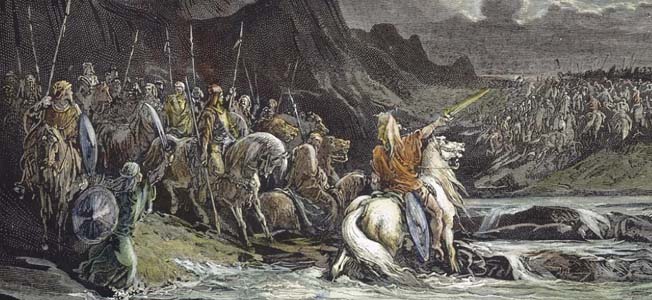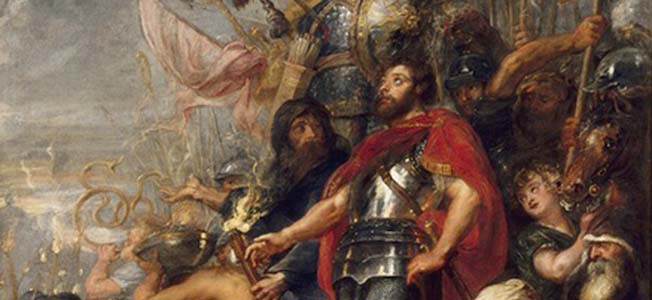Get to know the tactical side of Biblical history, from the Fall of Jericho to the Maccabean Revolt inside this free report.
Dear Biblical History enthusiast,
The ancient world was rife with conflict. It was an age of hostile invasions, of rulers aggressively expanding their empires, of overthrown territories desperately pushing back to preserve their culture.
Truly, the stories that shaped our early history are some of the most compelling and incredible you’d ever hope to read.
…and we’d like to tell you all about them, in a way you’ve never heard before.
War in Biblical Israel and Judah, our newest free report, will show you the tactical side of Biblical history, from Sennacherib’s war with Judah to the Maccabean Revolt. After reading the first few pages, you’ll begin to notice that the Bible’s fiercest conflicts are every bit as compelling and incredible as those of today. The tactics are just as brilliant and audacious, the causes every bit as just (and malevolent), the high stakes and sacrifices just as real.
Our special report first takes you into Jericho, as we dispel some of the most commonly held presumptions about Joshua’s Canaan campaign…

Truth Stranger Than Fiction During the Assault on Jericho
Contrary to popular belief, the Israelite army that rallied under Joshua’s command for the conquest of Canaan was not a rag-tag rabble of poorly armed ex-slaves. We now know that it was a highly trained army, capable of executing a wide array of tactical maneuvers. And its commander was a charismatic leader, a battle-hardened veteran and a lifelong soldier.
The result of the battle might have been easily forecast, given the circumstances. But as you’ll read, the events surrounding the conquest of Canaan and the fall of Jericho still withhold many surprises.
Secret Reconnaissance & Prostitute Spies
Having been ordered to begin the invasion, Joshua sent two spies to conduct reconnaissance of their objective before committing his army to cross the Jordan.
Once inside Jericho, the scouts rested at the house of a prostitute named Rahab. The choice of this location was sound spycraft: such places were always ready sources of loose talk, and one of few inside the small city where strangers wouldn’t raise questions.
Nevertheless, agents working for the king of Jericho detected the spies’ presence the night they arrived. The king demanded that Rahab turn them over, but Rahab lied to the king’s men, telling them that the Israelites had left the city around dusk.
…In actuality, she hid them on the roof.
Our free report will tell you all about Rahab’s invaluable contributions to the fall of Jericho, but the story doesn’t end there. You’ll also get an in-depth look at Joshua’s tactics, and how he and his army achieved victory.

Sabbotem: Joshua’s Invasion Begins
When analyzed from a military perspective, the fall of Jericho reveals Joshua’s brilliant tactical mind.
Texts use the Hebrew word sabbotem to describe the movement of the Israelite column at Jericho. Taken in context, the term does not mean “to march around,” but more precisely “to encircle.” If the Israelite army of 8,000 men truly encircled the city, it did so in a formation where each man occupied two feet of ground. A uniform phalanx six men deep; a robust and often-used military tactic for its time.
But why did Joshua order his army to encircle the city each day? And what did Joshua do to cause the city’s collapse so suddenly?
More to the point, was there even a valid military reason to destroy Jericho? The answer is concealed in an even more fundamental question: As there were several other approaches to the central Judean ridge Joshua could have chosen, why attack Jericho at all? You’ll have to read our first feature to find out.
Of course, there are many more stories to discover. Like how Jewish rebels, led by the son of a priest, rose in opposition to the total destruction of their culture…

The Maccabean Revolt: An Unlikely Hero Answers the Call
In 586 BC, the valiant defenders of Jerusalem had fought a hopeless battle against a massive Babylonian invasion. After that, the only Jewish warriors left were occasional mercenaries and hired hands. By 167 BC, it had been more than 400 years since any truly organized Jewish army had taken up arms against an enemy.
But then, Antiochus IV Epiphanes’ order for the complete Hellenization of Judea once again called for the Jewish people to defend themselves. And as you’ll soon discover, Antiochus’ attempt to force paganism on the Jews would prove to be his most costly mistake.
So convinced was Antiochus that the Jews would remain complacent, he soon left to attack the Egyptians. But fearing retribution from the Roman Empire, he cut short his assault at his siege of Alexandria. Losing face from his retreat, he soon turned his eyes back to Judea: here was a war he could claim, against an army he could easily crush. Afterward, he could trumpet his victory throughout the region, and use the Jewish annihilation as a warning to his bellicose neighbors.
The Seleucid troops began to massacre the Jewish population in Jerusalem, and burned revered documents containing Mosaic law. They looted temples, and desecrated holy sanctuaries, converting them to shrines for Zeus.
…But dissent had already begun, and it wouldn’t take long for a rebellion to take shape.
Leading a small band of about 200 people—roughly 50 of which were fighting men—Mattathias, a local priest from Mordiin, began to train local peasants in the Gophna Hills on how to soldier. He taught them guerrilla tactics and skirmish maneuvers that he knew were their only hope against the mighty Seleucid empire.
When Mattathias died a year later, Judas, his middle son, took up his father’s call to arms. The great Maccabean Revolt was soon underway.

Alexander the Great, Genghis Khan… Judas Maccabaeus
Judas spent this time constructing an efficient intelligence-gathering apparatus. He sent out agents to spread word about the revolt, recruit new men and collect weapons. When the time came, how did he and his men perform during their first major field operation against Antiochus’ army?
…As you’ll read inside, it was the stuff of legends.
Because he fought just one poorly chronicled war, Judas Maccabeus has largely been lost among the giant shadows cast by Alexander the Great, Julius Caesar, Genghis Khan, Shaka Zulu and other great conquerors. But unlike them, Judas was a man of noble motives who fought because he had no other choice. And inside our report, you’ll learn that his battlefield acumen was among the greatest of his age.
All This and More Inside
These are just two of the stories you’ll find inside our special report, War in Biblical Israel and Judah. You’ll also learn about the siege of Judah in 700 BC, Alexander the Great’s assault Tyre, and much more. Best of all, it’s all at absolutely no cost. You can start enjoying these stories of ancient battles and Biblical warfare as soon as you download your copy. So don’t delay; get to know the Biblical conflicts that shaped the world like never before today!
Sincerely,
Carl Gnam
Owner, Warfare History Network
P.S. Believe it or not, Joshua’s decision to assault Jericho had as much to do with hygiene as battlefield tactics. (Get the full story on page 6.)